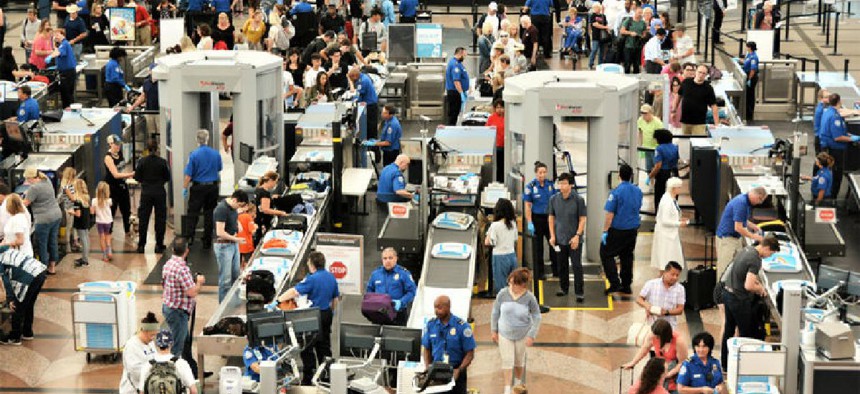TSA's vision for self-screening comes into focus

The Transportation Security Administration is asking vendors to imagine technology and processes to allow air travel passengers to screen themselves.

Long security lines at Denver Airport. (Photo credit: Jim Lambert/Shutterstock.com)
The Transportation Security Administration is asking vendors to imagine technology and processes to allow air travel passengers to screen themselves. In a contracting notice published Jan. 6, TSA indicates that automation and self-service can be used to dramatically speed up the screening process at airports.
TSA is hosting a Feb. 12 industry day to hear more from vendors and will accept responses to a request for information on self-screening through Feb. 21.
In a slide deck included with the contracting notice, TSA imagines eight self-screening stations occupying the same space as a single checkpoint lane and suggests it will be possible to device systems to provide "complete imaging without the need for passengers to pause in a specific stance."
Additionally, a new system would combine the screening of carry-on items and screening of passengers themselves into a single step, with travelers given the opportunity to respond to alarms by removing items that trigger machine responses and screen them separately or discard them without necessarily having to endure a pat-down from a TSA officer.
TSA has a few guidelines for vendors interesting in designing self-service screening systems, including making the components compact to increase the flow of passengers through security, making the self-service aspects of the interface easy to use and to make the system operate without much supervision from TSA officers.
The self-service effort is part of the Science and Technology Directorate's Apex Screening at Speed program. In a statement of work included with the notice, the program indicated that envisions a prototype to be delivered 20 months after an award with a field test of the new gear coming maybe four years after the initial award. The notice indicates that TSA PreCheck users will be the first travelers to test out the self-service technology, should the program prove successful.






